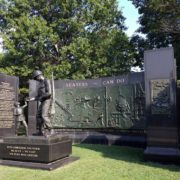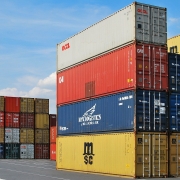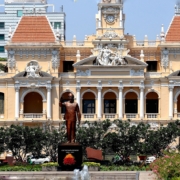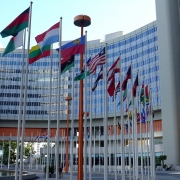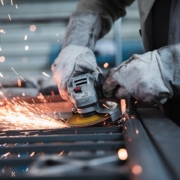Why is Taiwan an Asian Tiger?
Topic of Study [For H2 History Students]:
Paper 1: Understanding the Global Economy (1945-2000)
Section B: Essay Writing
Theme II Chapter 3: Rise of Asian Tigers from 1970s to 1990s [South Korea and Taiwan]
Historical context: The Cold War
During the Korean War, the Truman administration committed its armed forces to defend the Republic of China (ROC) government under Chiang Kai-shek. President Truman announced on 27 June 1950 that the Seventh Fleet would be deployed to the Taiwan Strait. His intention was to protect Taiwan from any possible Chinese attack.
The US government switched its foreign policy stance towards Taiwan from a “hands-off” approach to increased military commitment. Its purpose was to contain a possible expansion of Communist influence in East Asia.
In retrospect, Truman’s new policy of 1950 disengaged the Chinese from their hot civil war while engaging them in the global Cold War.
[…] It had secured the ROC in Taiwan from a major military showdown with the PRC on the mainland in the 1950s, it had preserved the political unity and social stability of Taiwan through the 1960s, and it had provided an opportunity for the island’s economic growth in the 1970s.
An excerpt from “The History of Taiwan” by Xiaobing Li.
Export promotion and industrial restructuring
In the 1960s, Taiwan was one of the world’s primary exporter for consumers goods, such as umbrellas, toys and shoes. In 1966, Taiwan established Export Processing Zones (EPZs). The Chiang government sought to pursue an export-driven strategy as seen by the provision of tax incentives to spur businesses to engage in international trade.
In the 1970s, the government had realised that its reliance on the maturing light industry was not sustainable, given the rise of other developing countries that possessed cheap and abundant labour. As such, it embarked on heavy and chemical industrialisation (HCI), targeting steel and petrochemical production.
In 1973, the Industrial Technology Research Institute (ITRI) was formed to facilitate the conduct of research and development (R&D). A year later, the Electronics Research Service Organisation (ERSO) was also set up, focusing on areas like electronic packaging, semiconductors and display devices. Similarly, the Hsinchu Science Park was created in 1980 to intensify efforts to develop high-tech industries. The government’s attempts have paid off as seen from the rise of tech firms like the Taiwan Semiconductor Manufacturing Company (TSMC) and United Microelectronics Corporation (UMC).
In August 1974, Sun contacted Dr. Pan in the United States and invited him to Taiwan to produce a study of ways in which the government could upgrade local industry, with the electronics industry playing the leading role. […] Pan recommended that the electronics industry should focus on semiconductor technology and that the technology be acquired from abroad; that a two-part strategic planning team be formed, one part in the United States and one in Taiwan; and that an organizational capability for implementation within the state be set up. A U.S. partner was to be located for an agreement for technology transfer and training.
An excerpt from “The Role of the State in Taiwan’s Development” by Joel B. Aberdach.
The 1980s tech drive: OEM and ODM
In the 1980s, the government went through institutional reforms to integrate Taiwan into the global economy. It intensified its policies of trade liberalisation and financial deregulation, opening the economy gradually. Yet, it proved challenging following the opening of China in the late 1970s as part of Deng Xiaoping’s Four Modernisations (四個現代化). Many Taiwanese manufacturers shifted production to China in response to rising production costs.
In this decade, more Taiwanese manufacturers in the electronics and technology sectors adopted either of the following two models: Original Equipment Manufacturer (OEM) or Original Design Manufacturer (ODM). For OEM, the local companies manufactured products for transnational corporations that focused on product design and R&D. Over time, some of these firms transitioned to become ODMs, such as Acer.
While the ERSO projects were important for the PC industry, the two industry leaders, Acer and Mitac, were doing OEM for ITT since 1982 and Mitac was not part of two of the three big desktop computer projects run by ERSO. […] OEM manufacturing firms can leverage their relationships with outsourcing partners to upgrade. The experience of Mitac, Acer and other fims, such as the printed circuit board manufacturer, Compeq, confirms this theory of upgrading.
An excerpt from “Technology Transfer Between the US, China and Taiwan: Moving Knowledge” by Douglas B. Fuller and Murray A. Rubinstein.
What can we learn from this article?
Consider the following question:
– How far do you agree that state intervention was indispensable in contributing to the economic miracle of Taiwan.
Join our JC History Tuition to learn more about the rise of Asian Tiger economies. The H2 and H1 History Tuition feature online discussion and writing practices to enhance your knowledge application skills. Get useful study notes and clarify your doubts on the subject with the tutor. You can also follow our Telegram Channel to get useful updates.
We have other JC tuition classes, such as JC Math Tuition and JC Chemistry Tuition. For Secondary Tuition, we provide Secondary English Tuition, Secondary Math tuition, Secondary Chemistry Tuition, Social Studies Tuition, Geography, History Tuition and Secondary Economics Tuition. For Primary Tuition, we have Primary English, Math and Science Tuition. Call 9658 5789 to find out more.
E



